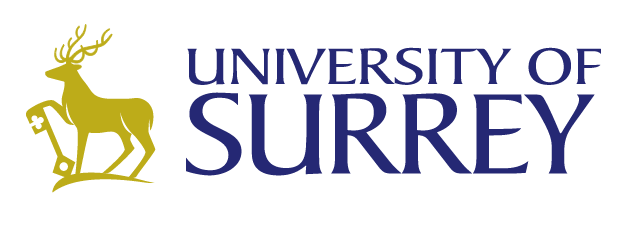CHICHIMEC
- Facts
- Sources of the data
- Orthography
- Verbal inflection
- Inflectional classes by affixation
- Stem alternation patterns
- Tone inflection
Facts
Chichimec or Chichimeca-Jonaz (known as ʔuząʔ by its speakers) is a Pamean language of the Oto-Pamean branch of Oto-Manguean. The language is spoken in the community of Misión de Chichimecas in the state of San Luis Potosi, Mexico, by under 1,000 people.
Sources of the data
Angulo, Jaime de. 1933. The Chichimeco Language, International Journal of American Linguistics 7: 152-194.
Palancar, Enrique L. and Heriberto Avelino. Forthcoming. Inflectional complexity and verb classes in Chichimec, in Enrique L. Palancar, Matthew Baerman and Timothy Feist (eds.), Inflectional complexity: New lights from the Oto-Manguean languages of Mexico. Available online.
Orthography
Tone
Chichimec has two tones: Low, marked with 1 or left unmarked, and High, marked with 2 or with an acute accent.
Verbal inflection
Verbs in Chichimec inflect for at least seven TAM values and for the negative (aspectually neutral), together with person of the subject, by means of prefixes. The TAM values include a present (or incompletive), three past tenses (anterior past, recent past and immediate past), two irrealis moods (future and potential) and a mood called ‘contemporaneous’ that we prefer to call ‘sequential’, which is used in linked clauses in clause combining constructions. Examples with the verb -nú ‘see’ are presented below.
| PRS | ANT.PST | REC.PST | IMM.PST | FUT | POT | SEQ | NEG | |
|---|---|---|---|---|---|---|---|---|
| 1SG | e-nú | tu-nú | ku-nú | u-nú | ga-nú | nu-nú | ra-nú | su-nú |
| 2SG | ki-nú | ki-nú | ki-nú | i-nú | ki-nú | mi-nú | gi-nú | si-nú |
| 3SG | e-nú | u-nú | ku-nú | zu-nú | ga-nú | mu-nú | ru-nú | su-nú |
Marking of number of person (dual and plural) is done by means of number suffixes, except for the 3rd person which often requires a special stem. Some verbs have distinct prefixes for the 1st plural, and some of them also for the 1st dual. When this happens, it is indicated in the database.
| 1DU.EXCL | e-nú-mp |
| 1DU.INCL | e-nú-s |
| 2DU | ki-nú-s |
| 3DU | e-nú-s |
| 1PL.EXCL | e-nú-hų́ |
| 1PL.INCL | e-nú-n |
| 2PL | ki-nú-n |
| 3PL | e-nhú |
Inflectional classes by affixation
Verbs can be said to fall into at least seven different classes attending to the prefix series they select. The verb -nú ‘see’ belongs to Class I. The other six paradigms are illustrated below.
Class II: -tsá 'do'
| PRS | ANT.PST | REC.PST | IMM.PST | FUT | POT | SEQ | NEG | |
|---|---|---|---|---|---|---|---|---|
| 1SG | tu-tsá | tu-tsá | gu-tsá | u-tsá | ku-tsá | nu-tsá | ra-tsá | su-tsá |
| 2SG | su-tcá | ki-tcá | ki-tcá | i-tcá | ki-tcá | mi-tcá | gi-tcá | si-tcá |
| 3SG | u-tsá | u-tsá | ga-tsá | zu-tsá | ku-tsá | mu-tsá | ru-tsá | su-tsá |
| 3PL | u-tshá | u-tshá | ga-tshá | zu-tshá | ku-tshá | mi-tshá | ru-tshá | su-tshá |
Class III: -mén 'like, love'
| test | PRS | ANT.PST | REC.PST | IMM.PST | FUT | POT | SEQ | NEG |
|---|---|---|---|---|---|---|---|---|
| 1SG | tu-mén | tu-mén | ku-mén | u-mén | gu-mén | nu-mén | ra-mén | su-mén |
| 2SG | su-mén | su-mén | ki-mén | i-mén | ki-mén | mi-mén | gi-mén | si-mén |
| 3SG | u-mén | u-mén | ku-mén | zu-mén | ga-mén | mu-mén | ru-mén | su-mén |
| 3PL | e-mén | e-mén | ku-mbén | zu-mbén | ga-mbén | mi-mén | ru-mbén | su-mbén |
Class IV: -ngwé 'strike'
| PRS | ANT.PST | REC.PST | IMM.PST | FUT | POT | SEQ | NEG | |
|---|---|---|---|---|---|---|---|---|
| 1SG | tu-ngwé | tu-ngwé | ku-ngwé | u-ngwé | ga-ngwé | mu-ngwé | ra-ngwé | su-ngwé |
| 2SG | ka-ngwé | ka-ngwé | e-ngwé | i-ngwé | ka-ngwé | ma-ngwé | ga-ngwé | sa-ngwé |
| 3SG | u-mé | u-mé | ku-mé | zu-mé | ga-mé | ma-mé | ru-mé | su-mé |
| 3PL | u-mbé | u-mbé | ku-mbé | zu-mbé | ga-mbé | ma-mbé | ru-mbé | su-mbé |
Class V: -ndų 'go'
| PRS | ANT.PST | REC.PST | IMM.PST | FUT | POT | SEQ | NEG | |
|---|---|---|---|---|---|---|---|---|
| 1SG | é-ndü | tá-ndü | ká-ndü | ká-ndü | tá-ndü | má-ndü | ná-ndü | sá-ndü |
| 2SG | kí-ndü | kí-ndü | kí-ndü | kí-ndü | kí-ndü | mí-ndü | mí-ndü | sí-ndü |
| 3SG | é-ndü | ú-ndü | kú-ndü | kú-ndü | gá-ndü | má-ndü | rá-ndü | sí-ndü |
| 1DU.INCL | é-ndü-s | tí-ndü-s | kí-ndü-s | kí-ndü-s | tí-ndü-s | má-ndü-s | ná-ndü-s | sá-ndü-s |
| 1PL.INCL | ú-ndür-ín | tí-ndür-ín | kí-ndür-ín | kí-ndür-ín | gú-ndür-ín | mú-ndür-ín | nú-ndür-ín | sú-ndür-ín |
| 3PL | é-ndür | ú-ndür | kú-ndür | kú-ndür | gá-ndür | má-ndür | rá-ndür | sí-ndür |
Class VI: -ngwé 'be, sit'
| PRS | ANT.PST | REC.PST | IMM.PST | FUT | POT | SEQ | NEG | |
|---|---|---|---|---|---|---|---|---|
| 1SG | é-me | ta-ngwé | na-ngwé | na-ngwé | ta-ngwé | sa-ngwé | sa-ngwé | sí-ngwe |
| 2SG | kí-me | sa-ngwé | za-ngwé | za-ngwé | sa-ngwé | sa-ngwé | sa-ngwé | sí-ngwe |
| 3SG | é-me | ta-ngwé | na-ngwé | na-ngwé | ta-ngwé | sa-ngwé | sa-ngwé | sí-ngwe |
| 1DU.INCL | é-me-s | ti-ngwé-s | na-ngwé | na-ngwé | ti-ngwé-s | si-ngwé | si-ngwé | sí-ngwe-g-ós |
| 1PL.INCL | u-gá-n | ti-ká-n | si-ká-n | si-ká-n | gi-ká-n | ni-ká-n | ni-ká-n | su-ngá-n |
| 3PL | e-gą́ | ta-ką́ | na-ką́ | na-ką́ | ta-ką́ | sa-ką́ | sa-ką́ | si-ngan |
Class VII: -nú 'see oneself' (mainly reflexive verbs and verbs with middle voice semantics)
| PRS | ANT.PST | REC.PST | IMM.PST | FUT | POT | SEQ | NEG | |
|---|---|---|---|---|---|---|---|---|
| 1SG | ti-nú | ta-nú | sa-nú | i-nú | ta-nú | na-nú | na-nú | si-nú |
| 2SG | si-nú | sa-nú | sa-nú | i-nú | sa-nú | za-nú | za-nú | si-nú |
| 3SG | i-nú | ta-nú | sa-nú | i-nú | ta-nú | na-nú | na-nú | si-nú |
| 1DU.INCL | ti-nú-s | ti-nú-s | si-nú-s | i-nú-s | ti-nú-s | ni-nú-s | ni-nú-s | si-nú-s |
| 1PL.INCL | ti-nú-n | ti-nú-n | si-nú-n | i-nú-n | ti-nú-n | ni-nú-n | ni-nú-n | si-nú-n |
| 3PL | i-nhú | ta-nhú | sa-nhú | i-nhú | ta-nhú | na-nhú | na-nhú | si-nhú |
Stem alternation patterns
Verbs in Chichimec display complex stem alternation patterns. Palancar and Avelino (forthcoming) propose at least 14 different patterns. All the forms are given in the database. By way of illustration, we present here the seven most representative patterns.
| Stem pattern 1 | ||||
|---|---|---|---|---|
| 1 | 2 | 3SG/DU | 3PL | |
| PRS | A | A | A | A |
| IMM.PST | A | A | A | A |
| REC.PST | A | A | A | A |
| ANT.PST | A | A | A | A |
| FUT | A | A | A | A |
| POT | A | A | A | A |
| SEQ | A | A | A | A |
| ‘laugh’ | ||||
| PRS | tér | tér | tér | tér |
| IMM.PST | tér | tér | tér | tér |
| REC.PST | tér | tér | tér | tér |
| ANT.PST | tér | tér | tér | tér |
| FUT | tér | tér | tér | tér |
| POT | tér | tér | tér | tér |
| SEQ | tér | tér | tér | tér |
| Stem pattern 2 | |||
|---|---|---|---|
| 1 | 2 | 3SG/DU | 3PL |
| A | A | A | B |
| A | A | A | B |
| A | A | A | B |
| A | A | A | B |
| A | A | A | B |
| A | A | A | B |
| A | A | A | B |
| ‘see’ | |||
| nú | nú | nú | nhú |
| nú | nú | nú | nhú |
| nú | nú | nú | nhú |
| nú | nú | nú | nhú |
| nú | nú | nú | nhú |
| nú | nú | nú | nhú |
| nú | nú | nú | nhú |
| Stem pattern 3 | |||
|---|---|---|---|
| 1 | 2 | 3SG/DU | 3PL |
| A | A | C | B |
| A | A | C | B |
| A | A | C | B |
| A | A | C | B |
| A | A | C | B |
| A | A | C | B |
| A | A | C | B |
| ‘heat’ | |||
| pan | pan | mban | phan |
| pan | pan | mban | phan |
| pan | pan | mban | phan |
| pan | pan | mban | phan |
| pan | pan | mban | phan |
| pan | pan | mban | phan |
| pan | pan | mban | phan |
| Stem pattern 4 | ||||
|---|---|---|---|---|
| 1 | 2 | 3SG/DU | 3PL | |
| PRS | A | D | A | B |
| IMM.PST | A | D | A | B |
| REC.PST | A | D | A | B |
| ANT.PST | A | D | A | B |
| FUT | A | D | A | B |
| POT | A | D | A | B |
| SEQ | A | D | A | B |
| ‘do’ | ||||
| PRS | tsá | tcá | tsá | tshá |
| IMM.PST | tsá | tcá | tsá | tshá |
| REC.PST | tsá | tcá | tsá | tshá |
| ANT.PST | tsá | tcá | tsá | tshá |
| FUT | tsá | tcá | tsá | tshá |
| POT | tsá | tcá | tsá | tshá |
| SEQ | tsá | tcá | tsá | tshá |
| Stem pattern 5 | |||
|---|---|---|---|
| 1 | 2 | 3SG/DU | 3PL |
| A | A | A | B |
| A | A | C | B |
| E | A | C | B |
| A | A | C | B |
| A | A | C | B |
| A | A | A | B |
| A | A | A | B |
| ‘learn’ | |||
| pen | pen | pen | phen |
| pen | pen | ven | phen |
| mben | pen | ven | phen |
| pen | pen | ven | phen |
| pen | pen | ven | phen |
| pen | pen | pen | phen |
| pen | pen | pen | phen |
| Stem pattern 6 | |||
|---|---|---|---|
| 1 | 2 | 3SG/DU | 3PL |
| A | A | A | B |
| A | D | A | B |
| A | D | C | B |
| A | D | C | B |
| A | D | C | B |
| A | D | A | B |
| A | D | A | B |
| ‘want’ | |||
| ՚i | ՚i | ՚i | r՚í |
| ՚i | tí | ՚i | r՚í |
| ՚i | tí | ndí | r՚í |
| ՚i | tí | ndí | r՚í |
| ՚i | tí | ndí | r՚í |
| ՚í | tí | ՚í | r՚í |
| ՚i | tí | ՚i | r՚í |
| Stem pattern 7 | ||||
|---|---|---|---|---|
| 1 | 2 | 3SG/DU | 3PL | |
| PRS | A | A | A | A |
| IMM.PST | D | D | D | A |
| REC.PST | E | D | C | A |
| ANT.PST | A | D | C | B |
| FUT | A | D | C | B |
| POT | D | D | D | A |
| SEQ | A | D | A | A |
| ‘narrate’ | ||||
| PRS | pín | pín | pín | pín |
| IMM.PST | ngwín | ngwín | ngwín | pín |
| REC.PST | mbín | ngwín | mín | pín |
| ANT.PST | pín | ngwín | mín | mbín |
| FUT | pín | ngwín | mín | mbín |
| POT | ngwín | ngwín | ngwín | pín |
| SEQ | pín | ngwín | pín | pín |
Tone inflection
Tone is a primarily a lexical phenomenon in Chichimec. Affixes normally receive tone by means of a prosodic rule affecting the word, by virtue of which they receive the opposite tone to that of the stem. In some cases, they appear to receive a different tone (although this could reflect a typo in the source data).
However, in some verbs (indicated in the database) tone plays a role in the inflection of a verb. The distribution of inflectional tone is lexical. There are many such combinations. Inflectional tone, when found, mainly falls on the stem. This can be seen by comparing the paradigms of tsá ‘hurt’ and mę́ ‘defend’.
| Stem pattern |
||||
|---|---|---|---|---|
| 1 | 2 | 3SG/DU | 3PL | |
| PRS | A | D | A | B |
| ANT.PST | A | D | C | B |
| FUT | A | D | C | B |
| REC.PST | A | D | C | B |
| IMM.PST | A | D | A | B |
| POT | A | D | A | B |
| SEQ | A | D | A | B |
| Tone pattern |
|||
|---|---|---|---|
| 1 | 2 | 3SG/DU | 3PL |
| L | L | L | L |
| H | L | H | H |
| H | L | L | H |
| L | L | L | L |
| H | L | H | H |
| L | L | L | L |
| H | L | H | H |
| Resulting form |
|||
|---|---|---|---|
| 1 | 2 | 3SG/DU | 3PL |
| -tsa | -tca | -tsa | -tsha |
| -tsá | -tca | -zá | -tshá |
| -tsá | -tca | -za | -tshá |
| -tsa | -tca | -za | -tsha |
| -tsá | -tca | -tsá | -tshá |
| -tsa | -tca | -tsa | -tsha |
| -tsá | -tca | -tsá | -tshá |
| Stem pattern |
||||
|---|---|---|---|---|
| 1 | 2 | 3SG/DU | 3PL | |
| PRS | A | A | A | B |
| ANT.PST | A | A | A | B |
| FUT | A | A | A | B |
| REC.PST | A | A | A | B |
| IMM.PST | A | A | A | B |
| POT | A | A | A | B |
| SEQ | A | A | A | B |
| Tone pattern |
|||
|---|---|---|---|
| 1 | 2 | 3SG/DU | 3PL |
| H | H | H | H |
| H | L | H | H |
| H | L | H | H |
| H | L | H | H |
| H | L | H | H |
| L | L | L | H |
| H | L | H | H |
| Resulting form |
|||
|---|---|---|---|
| 1 | 2 | 3SG/DU | 3PL |
| -mę́ | -mę́ | -mę́ | -mhę́ |
| -mę́ | -mę | -mę́ | -mhę́ |
| -mę́ | -mę | -mę́ | -mhę́ |
| -mę́ | -mę | -mę́ | -mhę́ |
| -mę́ | -mę | -mę́ | -mhę́ |
| -mę | -mę | -mę | -mhę́ |
| -mę́ | -mę | -mę́ | -mhę́ |
The two verbs have a lexical High tone. The 2nd person receives Low tone, except in the PRS tense of the verb mę́ ‘defend’. As for tense/aspect, tsá ‘hurt’ receives Low tone in the present, recent past and potential in all persons, and in the 3rd person SG/DU of the future. In contrast, mę́ ‘defend’ only selects Low tone for the potential, but it does not reach the 3rd person plural. Patterns like these are complex. Tone has been given in the database to aid future analysis of the data.






